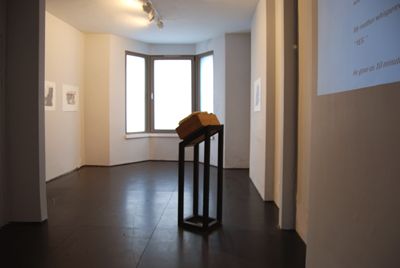
___________________________________________________________
Ipek Duben, Farewell My Homeland, Installation View 2013
___________________________________________________________
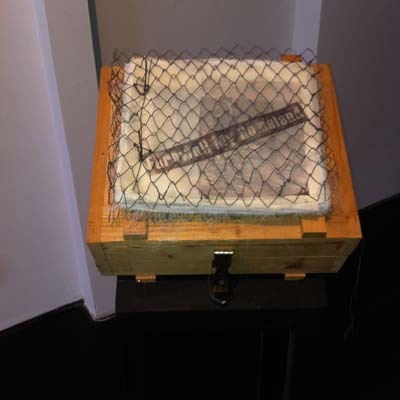
___________________________________________________________
Ipek Duben, Farewell My Homeland, Artist Book: Wire, Silkscreen prints, Wooden Box,
editioned, 2013
___________________________________________________________
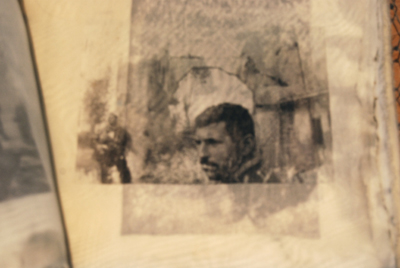
___________________________________________________________
Ipek Duben, Farewell My Homeland, Artist Book:View of Pages, Detail, 2013
___________________________________________________________

___________________________________________________________
Ipek Duben, Farewell My Homeland, Installation View 2013
___________________________________________________________
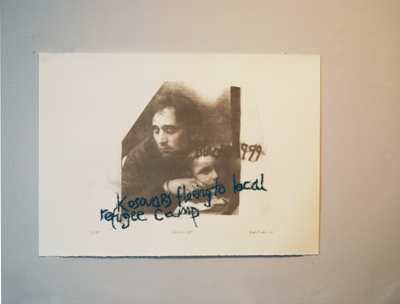
___________________________________________________________
Ipek Duben, Farewell My Homeland, Seriograph from a set of 7, 2013
___________________________________________________________
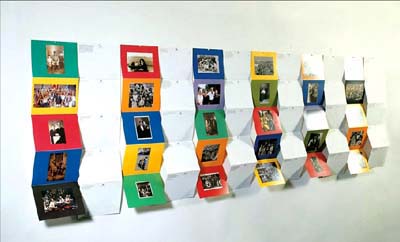
___________________________________________________________
Ipek Duben, What Is A Turk?,Installation Detail 2013
___________________________________________________________
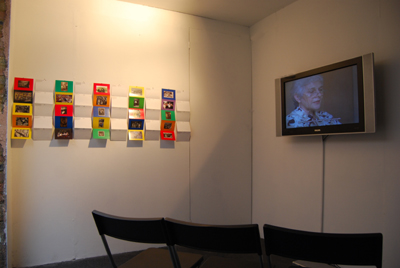
___________________________________________________________
Ipek Duben, What Is A Turk?,Installation View, 30 printed cards, video, 2013
___________________________________________________________
|
______________________________
Ipek Duben, 'What is a Turk', Gallery 1
Jefford Horrigan, ' The Gated Table', Gallery 2
______________________________
The Agency is pleased to present recent works by renowned Turkish artist Ipek Duben.
Duben, whose work is presented in the current Istanbul Biennale curated by Fulya Erdemci, is one of Turkeys most significant conceptual artists. Educated in New York in the mid- Seventies and having spent almost two decades living and working in the US Ipek Duben's practice bridges two cultures. Her work is of major importance today, not only for the earliest development of an independent Turkish conceptual language, but also as an important contributor to a global feminist language. The Agency is presenting two of her recent major pieces in London 'What is a Turk?' and 'Farewell My Homeland'. Duben raises crucial and current questions about a Turkish identity from an aloof and intellectual perspective forfeiting a richly textured language for precise minimal installation pieces. Turkish identity- both historically formative for the West during the Byzantine and Ottoman eras and later belittled during 20th century economic crises and mass migration - currently finds itself at a crossroads of a European/Asian identity crisis. It is also very much in the international eye at the moment with a conflicted yet highly interesting set of perspectives on democracy.
'What is a Turk' is an installation of 30 postcards, which juxtapose descriptions of the 'Turk' by Western authors with photographs of people and daily life in Istanbul.Western travellers, historians, anthropologists, journalists and diplomats from Rudyard Kipling, Edmondo de Amicis (Constantinople, 1896) to Robert Kaplan (The Coming Anarchy On Our Planet, 1994) have visited Turkey and wrote about their impressions about the people and the culture. The juxtaposition of the quotations and the photographs as documents of Twentieth century Turkish identity questions prejudice and stereotyping of 'the Turk' being terrifying at best and a lowly workforce at worst. At a time, when the West, as we have come to know and define it, is in decline and perspectives in the Middle East are shifting the installation raises poignant questions about the accuracy of historical accounts and the truthfulness of the archive.
'Farewell My Homeland' is a harrowing account of the involuntary migration of Turks, Kurds, Armenians, Kosovans, Mexicans, Vietnamese, Afghans, in short - ethnic groups who experienced displacement through conflict. Ipek Duben's screen-printed carefully selected images from news archives onto cloth pages and assembled these into a book made from wire-fencing and wood. Again she chooses humble means to express a powerful political message. The book becomes her personal record of the cruelty of enforced displacement. Duben makes reference to the objectivity of the archive with her vast collection of images, but she chooses to represent them with compassion expressed through the choice of her materials. The transparency and fadedness of white cloth, wire and wood, construction materials of fenced enclosures, which signify territorial demarcations, turn the photographic collection into a visceral lament.
Ipek Duben, who after two decades in the US, chose Istanbul as her main residence for most of her life has had a complex reception in Turkey with her early feminist and humanist subject matters. ............................................................................................. ______________________________________
JeffordHorrigan's performances are rooted in sculpture, often moving and manipulating furniture and household objects until they become different entities. By establishing a dense structure, which comes to mean/ contextualise the narrative Jefford Horrigan's performance is able to reach Artaudian extremes by temporarily shifting the significance of the objects through the implication of the object in his actions. Jefford Horrigan resists the documentation of his performances; they are intended for live performance only. Some rare footage and approved and directed films exist of his work. He is also performing his work 'Persephone' at the KCC London this month as part of the exhibition' Theresa Hak Kyung Cha (1951-82):A Portrait in Fragments', curated by Bea de Sousa.
|